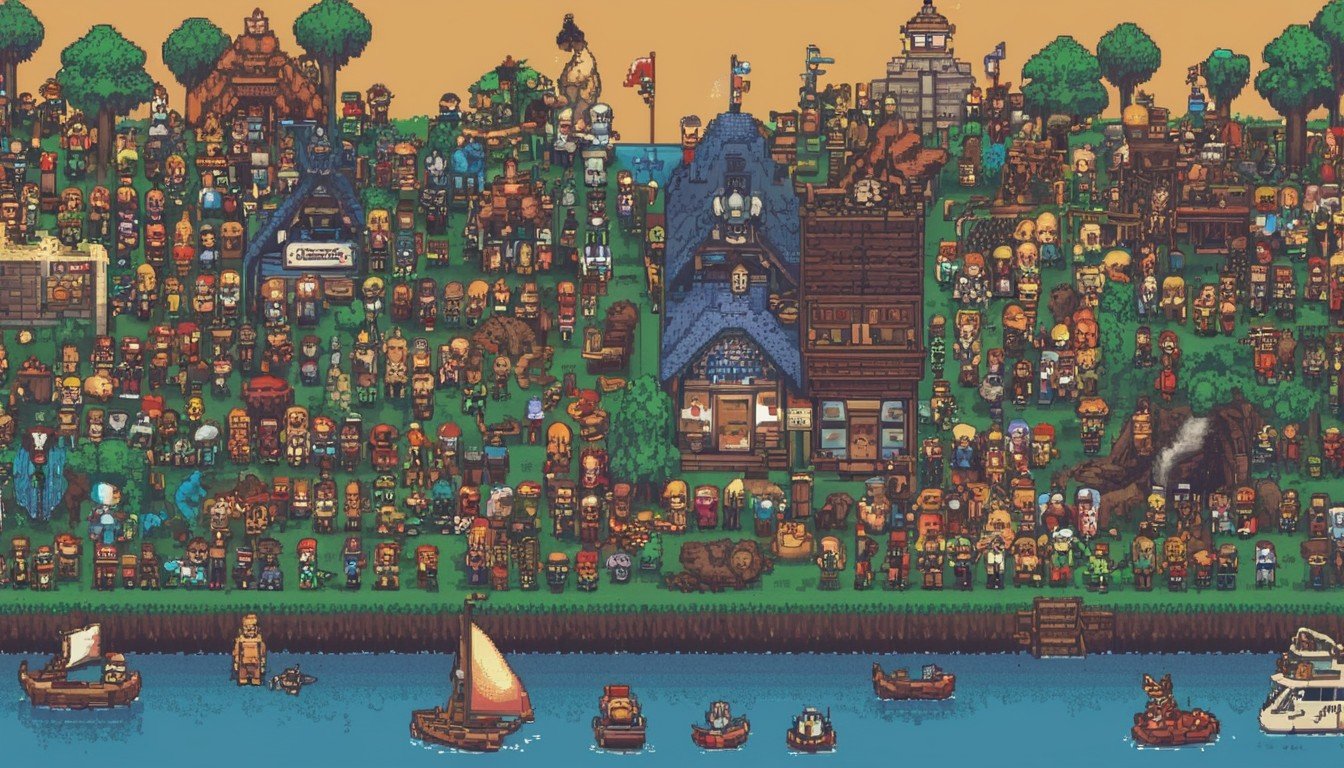Decentralized projects built on blockchain technology require strong community support, engagement, and collaboration to be successful and sustainable over the long term. The decentralized and open-source nature of these projects shifts more responsibility and governance into the hands of their user and developer communities. Establishing a collaborative environment where members feel valued and empowered to contribute is vital.
This article discusses why building community matters for decentralized projects, how to foster deeper levels of engagement, and how to encourage collaboration within the community.
Why Community Matters
Unlike traditional companies and organizations, decentralized blockchain projects rely much more heavily on their communities to drive initiatives, build new features, promote adoption, and even provide funding in some cases. They operate without formal management structures, so it’s crucial for the community to self-organize and work towards shared goals. This gives the community itself tremendous opportunities to directly influence the direction of the project. Cultivating an open, transparent, and collaborative environment empowers this kind of grassroots-driven progress.
Developing strong social connections and trust between members can lead to fruitful collaborations since members feel personally invested in the long-term success of the project. A sense of shared purpose binds members together. This also builds loyalty amongst members and incentivizes them to be active participants rather than passive observers. Especially for open-source developers, contributing to a project becomes more appealing if interpersonal community bonds exist.
As a project’s reputation spreads, an engaged community also serves as free and vocal marketing to help drive further adoption and growth. Decentralized projects by their nature have no organized marketing teams. So, the membership base itself functions as the main vehicle for increasing awareness and visibility. When members feel adequately represented, heard, and empowered, they will enthusiastically promote the project within both blockchain and mainstream channels.
Overall, it’s clear that decentralized projects rely on community strength and cohesion at their core in order to progress both their technology and its adoption. By giving members a greater sense of ownership and influence, they contribute more and stay loyal to the project long-term while spreading the word and attracting new participants.
Fostering Deeper Engagement
The most successful decentralized projects put great focus and effort into actively building their communities. They make member engagement one of the top priorities from the early stages of the project. It’s difficult to bolster community strength retroactively, so laying this foundation from the start helps ensure long-term growth and staying power.
There are several key strategies decentralized projects can use to foster deeper engagement from members:
Create official community coordination channels – Provide members with designated interactive channels like Discord, Telegram, or Reddit to facilitate discussion. These give members gathering places to communicate ideas, forge connections, and help onboard new people. Having defined spaces and forums strengthens social bonds and transparency between members.
Launch community initiatives – Community initiatives like collaborative funding pools, bounties, or competitions incentivize and reward members for participating while generating publicity. They demonstrate that member contributions have a tangible influence. They also gamify engagement which makes contributing more social and enjoyable.
Incorporate community feedback channels – Feedback channels ensure community sentiment gets expressed so it can actively shape priorities and direction. Channels like community improvement proposal processes, requests for comment periods, governance committees, or forums allow members to share input on anything from technical enhancements to incentive programs.
Appoint/elect community ambassadors and leaders – Highlight members who demonstrate exceptional commitment by giving them leadership roles like moderators, recruiters, or ambassadors. This empowers members to help coordinate community efforts while allowing the project leaders to focus elsewhere. It also forms a sense of hierarchy and advancement potential.
Enable collaborative development – Encourage members to collaborate on building real innovations for the ecosystem like applications or integrations. Provide documentation, tooling, and infrastructure support to lower barriers to entry for developing. Demonstrate their tangible efforts and implementations at events or in promotions that recognize their work.
Creating deeper personal connections and a sense of camaraderie between members generates a network effect of broader engagement. Members should feel their contributions, perspectives, and ideas matter. By putting engaged members directly at the heart of various initiatives, you organically grow a loyal community that fuels the continued development of the technology and its adoption.
Encouraging Collaboration
In addition to participation from individuals, decentralized projects need members to come together in collaborative groups to create innovative solutions. This stems from the open-source ethos at the foundation of many decentralized blockchain protocols and applications. While strong individual contributions are important for these communities, the best ideas and implementations often result from teams forming organically based on a common mission and purpose.
Decentralized projects should actively work to encourage “bottom-up” collaborations within their communities. These collaborations tap into the collective skillsets and passions across members, sparking fresh innovations supporting the ecosystem. They ultimately strengthen the project much more than individuals working in isolation. Promoting collaboration involves creating fertile environments for cooperative group efforts to thrive by implementing various community-focused mechanisms.
Collaboration Mechanisms
Here are some of the most effective mechanisms decentralized projects can leverage:
Hackathons & Bounties: Hackathons and bounty programs incentivize teams to come together for intensive development sessions focused on creating practical innovations. These events often generate valuable proofs-of-concept, libraries & tools, and documentation that can become widely adopted. They also forge lasting connections between members that spark additional initiatives later on.
Shared Spaces: Shared virtual spaces like Discord servers, forums, or Reddit channels allow members to casually interact, exchange ideas freely, and identify common interests with others. Shared spaces cultivate the interpersonal links for specialized groups to organically coalesce within the broader community over time.
Technical Programs: Programs like student developer networks and pre-acceleration cohorts designed for entrepreneurs/startups give members access to funding, tailored mentorship, tooling support, and peered learning opportunities to transform their ideas into real implementations with expert guidance.
Working Groups: Composed of key community members, working groups are established around initiatives vital to the project’s mission in areas like core protocol development, adoption efforts, research directions, and governance standards. These formal bodies coordinate resources and collaborate on execution plans which get approved by broader community processes.
While informal collaborations still occur, establishing decentralized frameworks specifically optimized for cooperation makes the formation, functioning, and longevity of these groups much more streamlined and impactful. They transform ideas into actions.
Collaboration in Action
A concrete example of community collaboration having a major influence is the inception and continued development of MetaCartel Ventures DAO. MetaCartel began with individuals in the Ethereum community who were interested in figuring out effective DAO funding models to accelerate development in the ecosystem.
Based on this common vision they formed a working group which led to the launch of MetaCartel Ventures in 2018 – one of the earliest practical DAO implementations providing community-sourced venture funding to promising projects utilizing Ethereum. It served as inspiration for a wave of other community DAO initiatives and continues to be an active organization.
This bottom-up, community-driven process led to real funding getting deployed into the hands of entrepreneurs building the next generation of Web3 applications, interoperable tooling, and infrastructure. It allowed the Ethereum community to take tangible action bolstering its own ecosystem from the inside based on collaborative efforts.
Had there not been an engaged meta-community of individuals coming together around a shared purpose, such innovation would likely not have manifested so rapidly, if ever. The connections formed sparked a movement now partially realized in the current state of Web3 funding, development, and adoption.
Key Takeaways
Decentralized blockchain projects represent a new paradigm from typical technology platforms when it comes to the vital role the community plays. By shifting influence and decision-making abilities into the hands of members themselves, these projects live and die based on the strength of their engaged communities.
Ensuring collaborative environments and deep engagement leads to grassroots support driving initiatives, contributions, and innovations supporting the project’s mission. Without this bottom-up community focus, decentralized projects easily lose momentum and relevance in the rapidly progressing crypto ecosystem.
Those projects that actively cultivate community bonds and collaborations will continue to tap that renewable energy source from within to stay competitive. They also build loyalty and allegiance among the members of the journey with them for the long haul. This networked support rapidly compounds based on direct interpersonal connections between members, rather than top-down mandates.
The projects poised to lead Web3 revolutions place community-building efforts at the core of their strategies from day one. Member engagement, encouraging cooperative development through focused programs, and incorporating community feedback in shaping direction sanctify the group ethos vital to decentralized organizations. Projects wishing to make lasting impacts should follow similar models emphasizing enabling their members to spread the mission.





